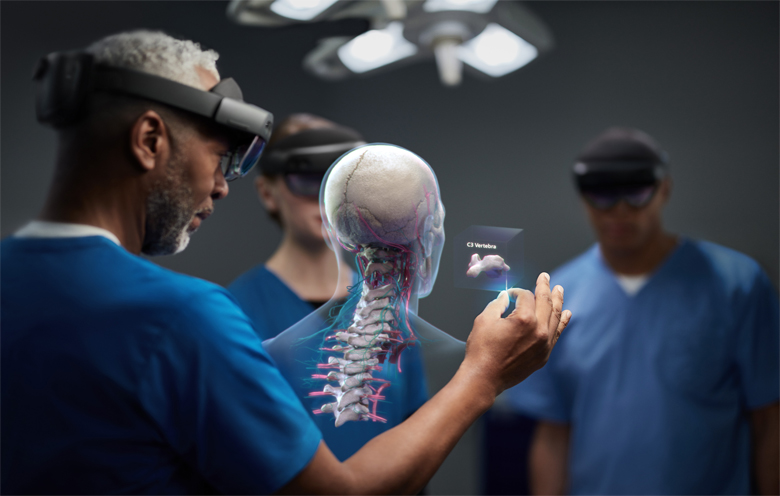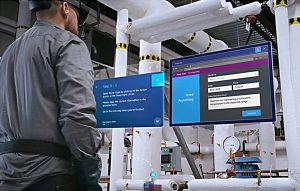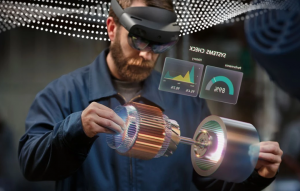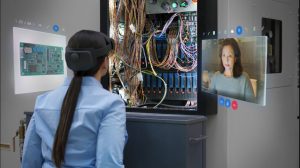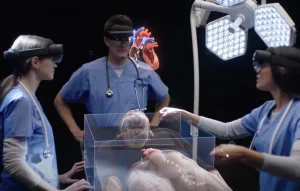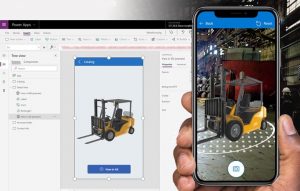Medical procedures require an extreme level of accuracy, focus and analysis abilities from the surgeons. They have to analyze different variables to make correct decisions while performing surgeries. And the time frame that medical practitioners get, is sometimes only in a fraction of seconds to save a patient’s life.
The use of mixed reality in the healthcare industry is quite new and it is being used to provide vital information to operating surgeons via a hands-free interface. Mixed reality facilitates healthcare professionals in making medical procedures simple and at keeping them safe for patients. Healthcare is one of the key areas for the introduction of MR, which includes surgical simulation, phobia treatment, robot training and expert training, etc.
Further development of mixed reality technology in multivariate healthcare facilities is the most important factor driving the industry. According to a research conducted by Fortune Business Insights, countries like Qatar, Saudi Arabia and UAE invest in advanced technologies such as IoT, virtual reality and augmented reality to advance their health systems.
The use of MR in healthcare is slated to boom in the future, particularly when it comes to medical training and virtual reality simulation.
Let’s take a look at a few ways in which the use of mixed reality is all set to make a difference in the healthcare industry:
1. Real-time diagnostics
The healthcare industry is already using virtual reality (VR) for immersive visualization. There are several other such uses of VR applications that help medical practitioners to get a multi-dimensional view of medical scans. This gives them a thorough understanding of the medical condition of a patient.
The incorporation of augmented reality in healthcare diagnostics is facilitating the industry with real-time visualization tools by combining its development into mixed reality.
For example, the use of MR glasses can overlay digital images on a patient’s body and help the medical practitioner to perform real-time analysis. And if necessary, patients can also look at their scans in real-time to get better clarity about their physical condition by using these devices.
2. Improved medical training
It has been observed that conventional methods of training are tedious and banal for medical students, and virtual reality is on the market to enable medical students to experience concepts such as the virtual section of the body. As far as the use cases of augmented reality in healthcare are concerned, augmented reality-assisted surgeries already exist.
The first augmented reality system for surgery adds a 3D representation that allows the surgeon to see the anatomy, skin and tissue of the patient through his beam vision. A digital healthcare company has developed a holographic augmented reality platform that provides surgeons with patient information and visualizations during surgery.
The platform allows surgeons to review 3D images of specific anatomy to ensure the success of the surgical procedure. Self-care, well-being, treatment, surgery, virtual reality (VR) and augmented reality (AR) improve many aspects of healthcare.
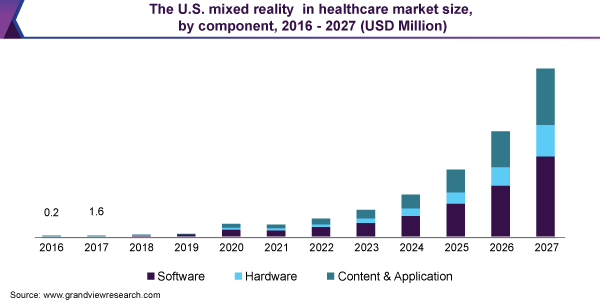
3. Image-guided surgery
As compared to conventional operations, the use of mixed reality helps surgeons to perform surgeries with better accuracy. The use of MR devices can provide surgeons with real-time information on a patient’s physical state while performing the surgery. This is because a mixed reality system provides a comprehensive view of a patient’s physical condition in three dimensions.
This kind of arrangement gives surgeons precise details that help them to make a more informed judgment to save a patient’s life while performing surgeries. This eventually leads to a high rate of success in performing complex surgeries.
The global mixed reality in healthcare market size was valued at USD 54.2 million in 2019 and is expected to grow at a compound annual growth rate (CAGR) of 48.7% from 2020 to 2027. – Grand View Research
4. Improving patient experience
The establishment of a doctor-patient relationship is an important aspect that helps to build trust between them. Patients can only trust doctors when their communication is clear, concise and effective. And mixed reality helps to establish it in a more immersive way. It helps doctors to explain things to a patient in detail for better clarity and understanding. The use of MR in the healthcare sector minimizes response time and improves surgical accuracy. This eventually leads to smooth treatment and a satisfying experience for patients.
5. Empowering healthcare professionals
Mixed reality empowers healthcare professionals to rethink and renew the healthcare industry by speeding up the diagnostic process, streamlining care time, enabling personalized experiences for patients and improving outcomes. The surge in clinical research showing positive results of mixed-effects treatment for patients generates optimistic impacts on patients and healthcare professionals and is expected to boost the market growth. The increased research activities and studies that signal the use of mixed reality in certain diseases such as pain management and mental health will increase sales growth in the forecast period.
Some advantages of mixed reality applications for healthcare:
- Real-time hands-on experience in medical education
- Improved patient education
- More detailed medical imaging
- Effective planning and assistance
- Assistance tool for surgeons
- Training and development
- Engaging patients
- Eliminating challenges and bottlenecks
- On-site/remote surgery assistance
- Remote patient care
The final say
With the realization of concrete benefits of mixed reality that are mentioned in this blog, it is obvious that the mixed reality application in healthcare has immense potential to improve, augment and empower the healthcare industry. Mixed reality is definite to take the industry to the next level and open new opportunities to working practices. Like it will help in providing medical students with interactive medical training, monitoring remote patients, improving reliability and increasing success rate while performing a surgery, etc.
Mixed reality will impact and improve all the departments of the healthcare sector, may it be skills development for medical students or practitioners, detection and diagnosis of disease, or providing the best-in-class treatment. On top of this, mixed reality is definite to improve the level of patient care which is the ultimate goal of the healthcare industry.


